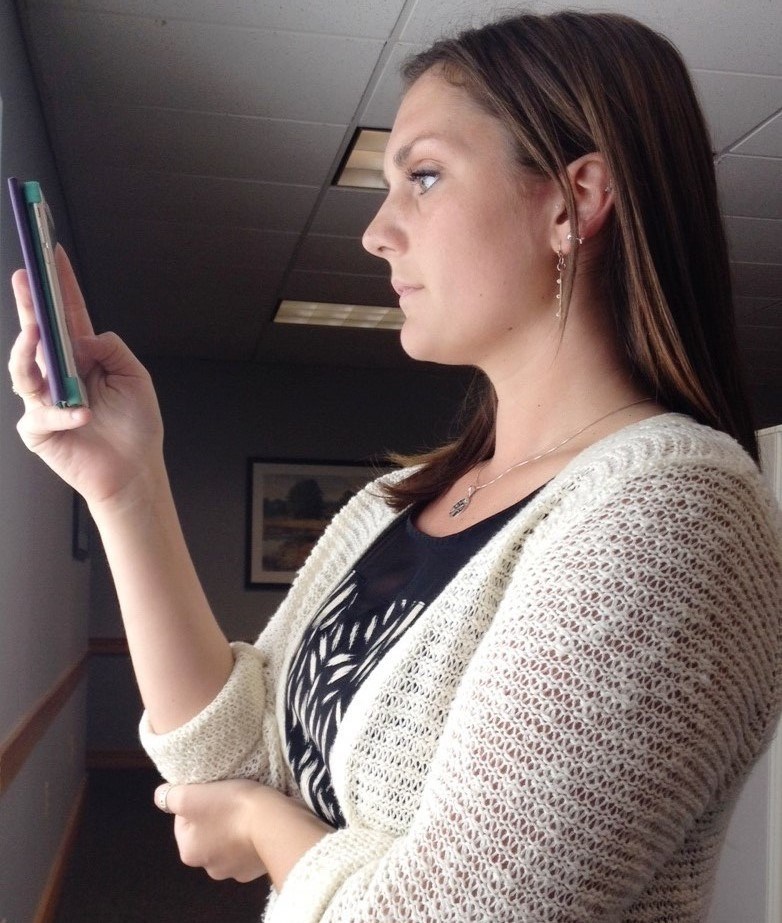02 Jul Kids & Parents: Watch out for Text Neck and Hurty QWERTY

What’s the normal posture of a teenager these days? Hint: This position once was known as the BlackBerry prayer. Head down, back and neck curved, thumbs flying all while using their smart phones. However, the practice of posture-torquing texting has created serious consequences for our skeletal structure – in a phrase, “text neck”. Here’s what you need to know and do.
“Text Neck” is a condition being seen more and more often by the health care community. It is form of repetitive stress injury that can have lifelong consequences. Think about the wrist and hand pain many adults experience from “mousing” all day without taking breaks or doing the recommended stretches that promote blood circulation. For many, the consequence for too much “mousing” is having to wear a brace or undergo surgery for carpal tunnel syndrome. Text neck could result in the same corrective therapies for an entire generation. Why?
In June 2006 in the USA, there were 12.5 billion texts sent monthly. By June 2011, that number grew to 196.9 billion. It is estimated that the average teen is sending more than 3,300 texts per month.
The body will revolt against being static for any period of time. A story posted on CNN tells the saga of a young teen who now has to endure corrective therapies to modify or reverse the pain she experiences as a result of persistent texting. Her neck and shoulder pain are the result of a near reversal of the normal angle of the neck portion of her spine.
To think that any teen will willfully stop their texting is unreasonable BUT there’s an app for that! For Google’s Android phones, there’s an application that will signal when the angle of the phone has exceeded healthful limits. Both visual and vibrating signals will help users keep proper postures.
In practical terms, though, we all need to take a break and add stretching to our regimen no matter what age we are. Parents are texting more to stay in touch with teens as well as surfing the web, reading from a Kindle or watching YouTube and Netflix videos. All these devices require static postures. Our own data also show that people accessing the Clark Insurance web site are increasingly doing so from mobile devices whether from cell phones or tablets. Both devices, however, encourage postures that are unhealthy but that can be modified.

What should anatomically correct texting look like? You need to keep your neck in an upright neutral position. Start by standing with your ears over your shoulders, eyes looking straight ahead. By bringing your mobile device up to meet that stance, you’ll relieve stress on your neck. So how do you avoid having your arms become a problem from holding up your device? When reading, hold the phone in one hand at the appropriate height and support that arm at the elbow with the other hand. Another neutral position is to lie down on a couch with good head support. When using tablets or phones, sit against a couch or wall with your knees bent and rest your elbows on your knees to maintain the proper position.
Most important, however, is to keep moving. Don’t rob your muscles of oxygen-rich blood.
Hurty Qwerty
You can’t make this stuff up but the incidence of people walking into traffic, signs, posts as well as other people while texting is becoming an issue. Near-misses or minor injuries might be enough for some to learn a lesson but for many, thumbing their QWERTY keyboard overrides any common sense or awareness of their surroundings. It’s bad enough that far too many people text while driving – now we have to watch out for those who text while walking. While it seems that time will cure those who present such hazards to themselves and others, some municipal officials have actually tried to introduce ordinances and safety measures to alert people who are distracted while walking – padding for posts, fines for being distracted while texting, and sensors that alert pedestrians of upcoming crosswalks and street corners.
It is doubtful the human mind will evolve quickly enough to multi-task safely when it comes to texting and doing other activities. With that in mind, perhaps it’s time to put the phone away, look where you’re going and enjoy the day and the journey you’re on.



